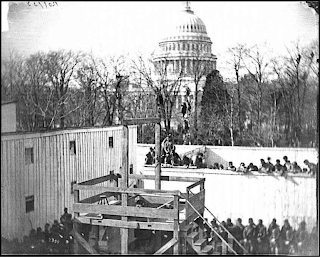 |
| Aerial photo of U.S. fleet at Pearl Harbor |
At precisely 7:55 a.m. Hawaii Time, Japan unleashed a massive surprises air attack on the U.S. Pacific Naval Fleet. According to The History Channel website, “five of eight battleships, three destroyers, and seven other ships were sunk or severely damaged, and more than 200 aircraft were destroyed. A total of 2,400 Americans were killed and 1,200 were wounded, many while valiantly attempting to repulse the attack. Japan's losses were some 30 planes, five midget submarines, and fewer than 100 men.” Because of this horrific attack on American soil, which isn't something we were used to, Americans viewed war a lot differently. American’s acted quickly towards wanting war and supporting the war effort. Due to the fact that this attack happened so close to home states on the West coast, such as Oregon California, and Washington practiced blackout routines as precautions. This cause American’s to unite, come together and protect their homeland. America was affected psychologically as well. After the attack on Pearl Harbor the people and the news made Japanese-Americans out to be villains. We then forced these people into internment camps. America was so irate that it took advantage of these people’s rights, took them from their homes, and put them in unhealthy, inhabitable camps.
The day after the attack on Pearl Harbor President Franklin D. Roosevelt gave a very short, very powerful speech to Congress and than asked them to support the declaration acknowledging the state of war between the United States and Japan. The Senate voted for war against Japan by 82 to 0, and the House of Representatives approved the resolution by a vote of 388 to 1 (2). The speech FDR gave was on national radio and also broadcasted in schools. This would eventually lead to Germany and Italy, allies with Japan, to declare war against the United States. At the end of FDR’s 6-minute speech he says, “We will gain the inevitable triumph, so help us God." This is statement is virtually what makes Congress agree to the declaration and gets American support.
- Joe E. and Anthony S.
1. Department of Defense. 50th Anniversary of World War II Commemorative Committee. Pearl Harbor: 50th Anniversary Commemorative Chronicle, "A Grateful Nation Remembers" 1941-1991. Washington: The Committee, 1991, http://www.history.navy.mil/faqs/faq66-1.htm (accessed Nov 27, 2013).
2. “Pearl Harbor bombed,” The History Channel website, http://www.history.com/this-day-in-history/pearl-harbor-bombed (accessed Nov 27, 2013).














